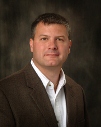 EMAIL INTERVIEW
– Tony Paine and Manny Mandrusiak
EMAIL INTERVIEW
– Tony Paine and Manny Mandrusiak|
May 2011 |
[an error occurred while processing this directive] |
| |
 EMAIL INTERVIEW
– Tony Paine and Manny Mandrusiak
EMAIL INTERVIEW
– Tony Paine and Manny Mandrusiak
Tony Paine, President and Co-Owner of Kepware Technologies
Kepware is a leading provider of automation protocols
and communications interoperability. Tony joined the company in 1996
and throughout his career there, has been pivotal in the architectural
development of all Kepware products. Tony has represented Kepware in
various open standards committees and is currently a member of the
Technical Advisory Committee for the OPC Foundation, where he helps to
drive the technical direction of the automation industry. He has a
Bachelor’s degree in Electrical Engineering from the University of
Maine at Orono.
This
next generation grid, the
Smart Grid, will allow for the bidirectional flow of data, allowing for
real-time decision making to ensure that energy is produced and
provided in the most cost effective manner.
| Articles |
| Interviews |
| Releases |
| New Products |
| Reviews |
| [an error occurred while processing this directive] |
| Editorial |
| Events |
| Sponsors |
| Site Search |
| Newsletters |
| [an error occurred while processing this directive] |
| Archives |
| Past Issues |
| Home |
| Editors |
| eDucation |
| [an error occurred while processing this directive] |
| Training |
| Links |
| Software |
| Subscribe |
| [an error occurred while processing this directive] |
Mandrusiak: I read
your article entitled Smart-Energy Consumption via an Open
Ecosystem and was intrigued by the visionary statements you made
regarding the Smart Grid, and the trends that you see for 2011.
Would you care to elaborate on some of the technology trends that you
are seeing?
Mandrusiak: You also
mentioned the term “Open Ecosystem” when referring to the
collaboration between technologists and utility companies. Can
you describe for our readers how you see a possible architecture
develop?
Paine:
There is a lot of collaboration today in and between different
groups,
such as the Utility Technology Association (UTA), National Institute of
Standard and Technology (NIST) and GridWise Alliance, where work is
being done to establish the basic foundation for a next generation
architecture, allowing the supply of energy. Energy starts from power
generation, flows through transmission systems into distribution, and
eventually is provided to consumers. This next generation grid, the
Smart Grid, will allow for the bidirectional flow of data, allowing for
real-time decision making to ensure that energy is produced and
provided in the most cost effective manner. In order to achieve the
information flow required to make these decisions, interoperability
between existing and new infrastructure is necessary.
Mandrusiak: In the evolving Smart Grid Infrastructure what role do you see OPC technology playing?
Paine: OPC has already solved many of these same interoperability issues in the automation industry. Since the OPC standard has become the de facto standard for openness in this space between vendors, I would expect it to play a key role in terms of the interoperability between Industry and the Grid.
Mandrusiak: Smart Meters are always a topic discussion, and as they are being deployed the issue of data security would naturally become a concern. What steps has OPC technology taken with regards to keeping data safe?
Paine: OPC has been working hard over the past several years to build the latest interoperability standard called the Unified Architecture. It took all the functionality that OPC had developed in previous years, such as how to exchange real-time data, alarm and events, historical information, and generalized it into a common set of services. Perhaps more importantly, OPC accessed how their technology was being used – ways it never imagined since its inception – and found that it was being used to transfer information over the Internet and in systems where security vulnerabilities could expose risks to the environment or human life. As such, OPC looked at Industries latest security standards and incorporated them into the specifications. This was done in such a way that as new security standards evolve they can be easily incorporated into OPC’s latest technology without having to re-architect or re-implement the specifications.
[an error occurred while processing this directive]Mandrusiak: The topic of being able to access data on handheld devices and Smartphones comes up quite a lot. What are your thoughts on accessing data from HVAC systems for example on a Smartphone? Will OPC make this possible?
Paine: OPC’s Unified Archictecture has been designed for platform independence and is capable of running on embedded devices, such as a mobile handheld device. Our expectations today is that we can access data from anywhere in the world and the latest smart-phones provide a convenient platform to make this achievable. The Unified Architecture provides two important key elements which would allow for this kind of information exchange. First, it can reliably move information from internal systems into the cloud (a public or private repository for data) using secure methodologies. Second, its platform independence makes it possible to pull the information out of the cloud and into your mobile platform for analysis or visualization.
Mandrusiak: I would like to get your closing thoughts about how Kepware is approaching information exchange in the Building Automation Vertical, and where interested parties can get more information about the OPC products what will enable them to leverage some of the concepts that we discussed in this interview?
[an error occurred while processing this directive]
[Click Banner To Learn More]
[Home Page] [The Automator] [About] [Subscribe ] [Contact Us]